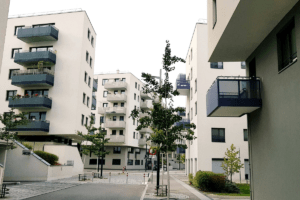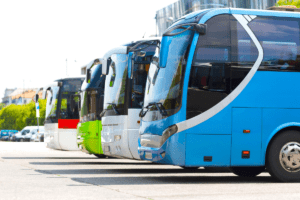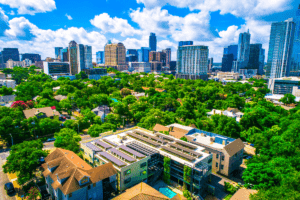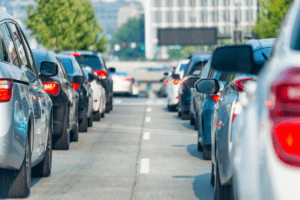 Introduction
Introduction
Urban planning is a multidisciplinary field that focuses on the design, development, and organization of cities and urban spaces. It involves coordinating land use, transportation networks, environmental sustainability, and economic development to create well-functioning and livable communities. Urban planners work to balance various aspects such as housing, infrastructure, commercial development, and social equity to improve the quality of life for city dwellers.
With the rapid growth of urbanization, the need for effective urban planning has never been greater. Poorly planned cities can face issues such as congestion, pollution, inadequate housing, and inefficient public services. Urban planning helps address these challenges by ensuring that cities are sustainable, resilient, and adaptable to future growth and changes.
The Importance of Urban Planning
Urban planning plays a vital role in shaping the physical, social, and economic structure of a city. It is crucial for several reasons:
- Enhancing Livability: Urban planning ensures that residents have access to essential services such as healthcare, education, public transportation, and recreational spaces. It creates vibrant neighborhoods where people can live, work, and interact comfortably.
- Promoting Sustainability: By integrating green spaces, reducing energy consumption, and implementing efficient transportation systems, urban planning minimizes the environmental impact of cities.
- Supporting Economic Growth: Well-planned cities attract businesses, investors, and industries, leading to job creation and economic stability.
- Improving Infrastructure and Transportation: Effective urban planning helps develop roads, public transit, utilities, and essential infrastructure, reducing congestion and improving connectivity.
- Ensuring Social Equity: Urban planning strives to provide affordable housing, equitable access to public services, and inclusive development to reduce social and economic disparities.
Key Elements of Urban Planning
 Urban planning consists of several components that contribute to the sustainable development of cities. These include:
Urban planning consists of several components that contribute to the sustainable development of cities. These include:
1. Land Use Planning
Land use planning involves designating specific areas for residential, commercial, industrial, and recreational purposes. Zoning regulations help control the use of land to ensure a balanced and functional city layout. Effective land use planning prevents overcrowding, promotes mixed-use developments, and optimizes space utilization.
2. Transportation and Mobility Planning
 A well-planned transportation system is critical for the smooth movement of people and goods. Urban planners focus on developing:
A well-planned transportation system is critical for the smooth movement of people and goods. Urban planners focus on developing:
- Public transportation networks (buses, subways, trams, and trains)
- Pedestrian-friendly streets and walkways
- Bicycle lanes to promote sustainable mobility
- Smart traffic management systems to reduce congestion
3. Housing and Real Estate Development
Urban planning ensures the availability of quality housing for different income groups. Affordable housing initiatives, mixed-income developments, and smart housing policies help accommodate the growing urban population while reducing homelessness and slum expansion.
4. Environmental Sustainability and Green Spaces
 Sustainable urban planning prioritizes:
Sustainable urban planning prioritizes:
- The integration of parks, gardens, and open spaces for improved air quality and recreational activities.
- Eco-friendly construction methods and materials to reduce the carbon footprint of buildings.
- Efficient waste management and recycling programs.
- The promotion of renewable energy sources such as solar and wind power.
5. Public Spaces and Community Development
Public spaces such as parks, plazas, and cultural centers play a key role in fostering social interaction and cultural activities. Urban planners focus on creating vibrant, inclusive, and accessible public spaces to enhance community engagement and promote social cohesion.
6. Smart Cities and Technological Integration
With advancements in technology, urban planning is evolving to incorporate smart city solutions. Smart urban planning involves:
- The use of data analytics and artificial intelligence to optimize city services.
- IoT (Internet of Things) applications for efficient energy and resource management.
- Digital platforms for community participation in planning and decision-making.
- Automated transportation systems, such as electric buses and self-driving cars.
Challenges in Urban Planning
Despite its importance, urban planning faces several challenges:
1. Overpopulation and Urban Sprawl
Rapid urbanization has led to overcrowded cities, increased demand for housing, and urban sprawl, resulting in inefficient land use and pressure on resources.
2. Traffic Congestion and Poor Transportation
 Many cities struggle with inadequate public transportation and poorly designed road networks, leading to severe traffic congestion, pollution, and loss of productivity.
Many cities struggle with inadequate public transportation and poorly designed road networks, leading to severe traffic congestion, pollution, and loss of productivity.
3. Climate Change and Environmental Issues
Urban areas contribute significantly to carbon emissions and environmental degradation. Rising temperatures, pollution, and extreme weather events pose threats to city sustainability.
4. Economic and Social Inequality
Many urban areas experience income disparities, lack of affordable housing, and unequal access to public services, leading to social divisions and marginalization.
5. Political and Bureaucratic Barriers
Ineffective governance, policy delays, and corruption can hinder the successful implementation of urban planning projects.
FAQs about Urban Planning
1. What does an urban planner do?
Urban planners develop strategies for land use, transportation, housing, and public spaces to create functional and sustainable cities.
2. Why is urban planning important?
It ensures organized development, reduces congestion, promotes sustainability, and enhances the overall quality of life in urban areas.
3. What are the key principles of urban planning?
Sustainability, accessibility, inclusivity, economic viability, and resilience are key principles guiding urban planning.
4. How does urban planning address climate change?
By promoting green infrastructure, energy-efficient buildings, public transport, and sustainable land use, urban planning mitigates environmental impact.
5. What is the difference between urban planning and architecture?
Urban planning focuses on the broader organization of cities, while architecture is concerned with individual building design.
6. How do urban planners ensure sustainability?
Urban planners incorporate green building standards, efficient public transportation, renewable energy, and resource management to promote sustainability.
7. What role does technology play in urban planning?
Smart city solutions, artificial intelligence, IoT, and data-driven decision-making are revolutionizing urban planning to enhance efficiency and sustainability.
8. How do governments and local authorities influence urban planning?
Policies, zoning laws, and public initiatives shape urban development, ensuring that growth aligns with sustainability and economic goals.
9. Can urban planning help reduce traffic congestion?
Yes, through effective transportation planning, public transit expansion, and smart traffic management systems, urban planning can alleviate congestion.
10. What are some successful examples of urban planning?
Cities like Copenhagen, Singapore, and Amsterdam are known for their well-executed urban planning strategies that prioritize sustainability, public transport, and livability.
Conclusion
Urban planning is a fundamental discipline that shapes the future of our cities. By focusing on sustainability, innovation, and inclusivity, urban planners can create livable, efficient, and resilient urban environments. As urbanization continues to accelerate, effective planning will be critical in addressing modern challenges while ensuring a high quality of life for all residents.
